Linking current scientific findings with ancient Indigenous stories in Queensland, Australia, is just a normal day on the job for Christina Chiotakis.
To mark NAIDOC Week 2023, The Greek Herald speak exclusively with Christina about her career as a palaeontologist and how she uses science daily to verify Indigenous stories passed down through the generations.
‘I wanted to be a dinosaur hunter’:
With a Greek dad and an Indigenous-Australian mum, Christina’s heritage has contributed to her love for ancient fossils and led to her working as a palaeontologist at the Queensland Museum in Brisbane.
Christina tells The Greek Herald how she instantly fell in love with fossils after receiving a stegosaurus dinosaur toy at the age of two. Later, when she turned eight, Christina wrote in her notebook: ‘I want to be a dinosaur hunter.’
“I was always drawn to this path and mum would buy us [Christina and her sisters] things that would help with what we wanted to do,” Christina explains.
“My mum would say, ‘if you want to do this, you can, but you’re the one who has to put in the effort to do it’.”
On school holidays, Christina would take the long six-hour drive with her grandparents to visit Roma in western Queensland where her mum was from. Roma was an area where many Aboriginal peoples of the Mandandanji Nation lived.
Her mum would also often share Indigenous stories, which then filtered into Christina’s everyday life.
She recalls a time when she was on a university field trip with her class where she noticed yellow butterflies and told her class, ‘It’s going to rain.’ Her classmates responded with disbelief and curiosity as to why Christina would make such a bold statement. Later that night, it rained.
On her field trip, Christina wouldn’t know it yet but the stories passed onto her from her mum would play a significant role in her path as a palaeontologist.
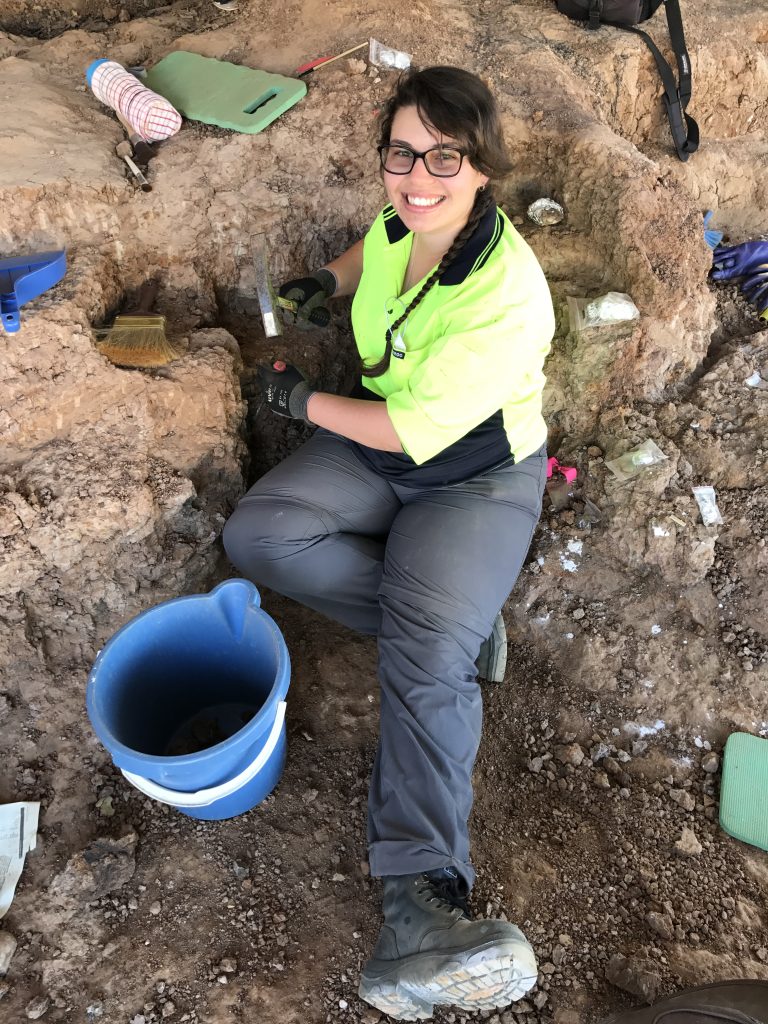
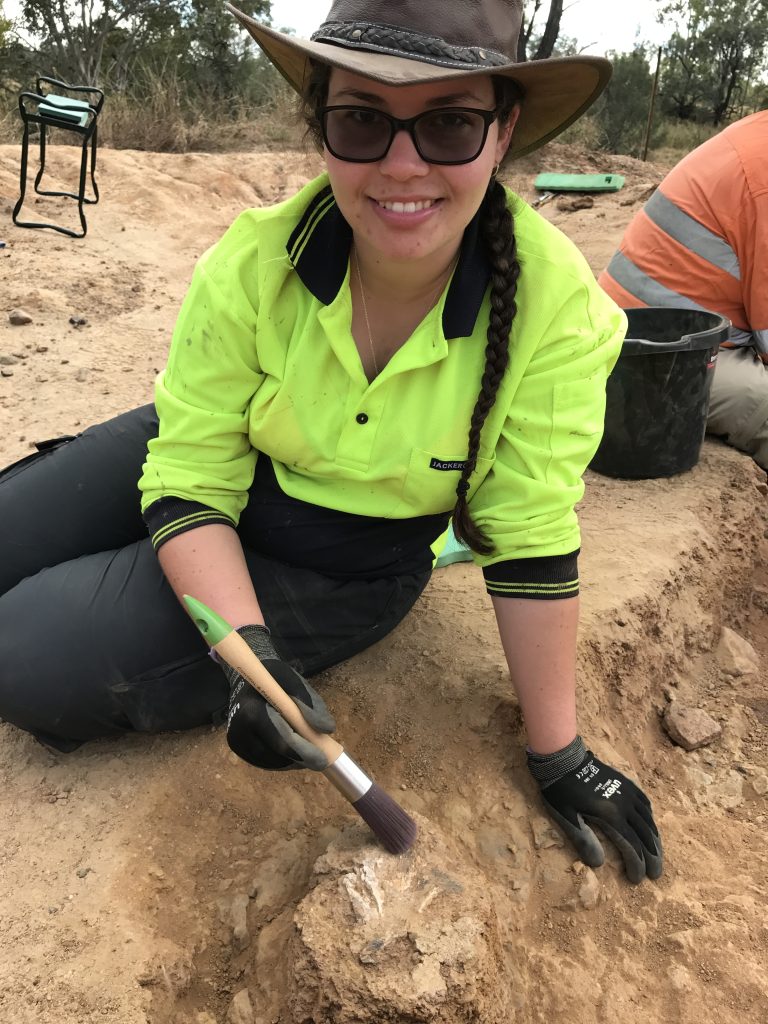
But so would her Greek heritage.
Growing up, Christina felt more connected with her Greek side because she spent a lot of time with her Greek grandma.
“At home there were certain words that were recognisable to me as a kid because I was learning dinosaur names. So I knew that they were Greek and Latin,” Christina explains.
“But if I didn’t quite know the meaning of the name I would ask, ‘what does this word mean’ and realise that’s how they got the names for a particular dinosaur.”
Dedicating her life’s work to dinosaurs:
A book Christina’s mum gifted to her in high school called Amazing facts about Australian Dinosaurs written by Doctor Scott Hocknull and Doctor Alex Cook, would cement her pursuit to become a palaeontologist and land her a position at the Queensland Museum where she still works 13 years later.
“I had never been to the museum before, but Scott was giving a talk and I was like I have to go. I must talk to him,” Christina says, while explaining that Dr Hocknull is a vertebrate palaeontologist at the Queensland Museum.
“I went to this talk with my book, and I intended to have Scott sign it. It’s been 13 years and I still haven’t got the book signed but I have worked with him this whole time!”
During Christina’s school years, she volunteered at the Museum every week while studying a degree in geoscience, environmental science, and ecological science.
Throughout the journey, Christina received pushback, especially as a teenager, with people saying palaeontology is for boys because dinosaurs are ‘for boys.’
But she persevered and was advised that if she wanted to be a palaeontologist, she had to be willing to sit for hours every day looking at microfossils, which are anywhere from a couple of millilitres to a centimetre big.
“I did a bit of everything to gain experience. I worked sorting sediments and material and bones, which is what I started out with because that’s one of the tedious jobs,” Christina explains.
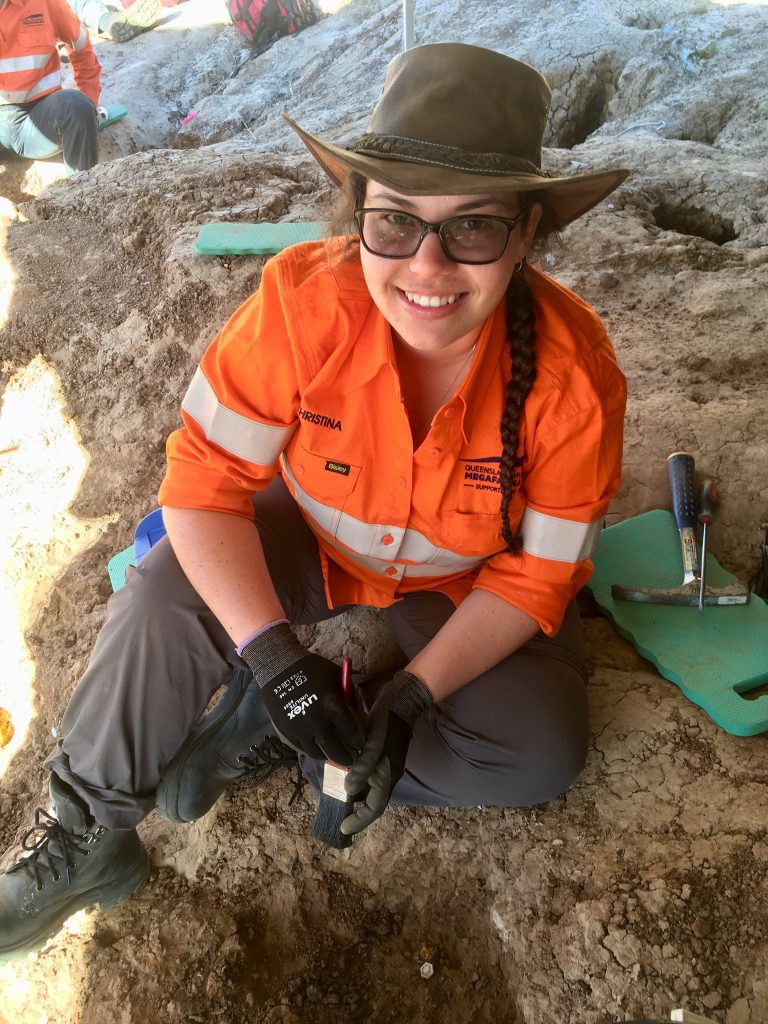
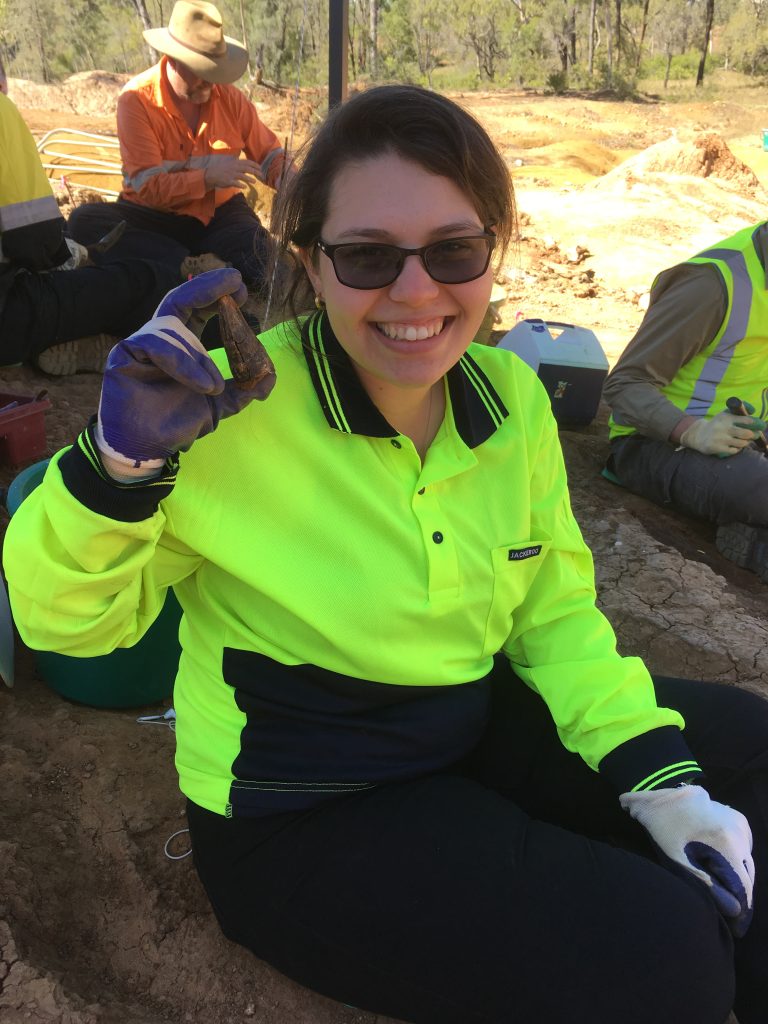
The now 29-year-old explains the purpose of her work at the Queensland Museum and the ability to confirm Indigenous stories of the past, as well as learn more about the state’s history.
The three sciences Christina studied at university help to put the whole picture together about the rocks, the environment of the bones, and the animal. Her work tracks changes in the environment from the past and how it can potentially contribute to the future, while giving credit to Indigenous stories that have been told for generations.
“On sites, where possible, we work closely with the Indigenous community,” Christina says.
“On the one at South Walker Creek, we work with the Barada Barna people. They’re the ones who first found the fossils and brought them to our attention.”
In 2008, the Barada Barna people – the traditional owners of the area at South Walker Creek located near the town of Nebo, west of Mackay in Queensland – made a discovery. They found unusual bones while conducting a cultural heritage survey of the local mine.
“We have them come in and give their interpretation of the fossils and tell their side of the story. I find it super fascinating to go back to Indigenous stories and make that link to the mega faunas,” Christina says.
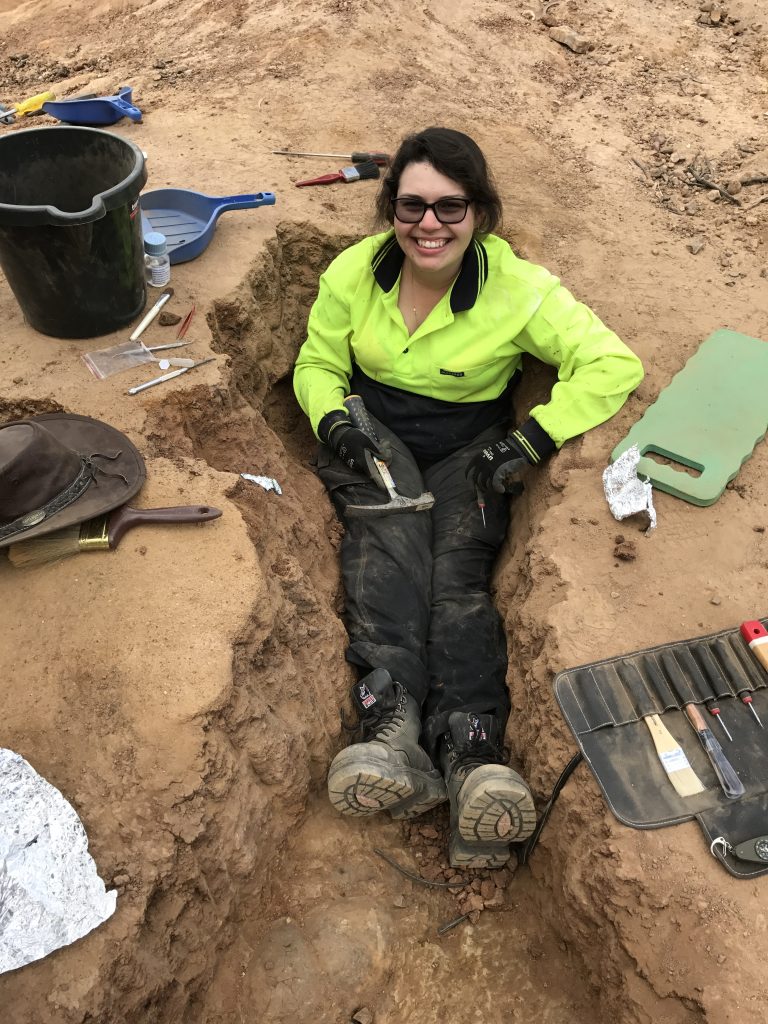
“Dinosaurs are very old, but megafauna is something we now know has human overlap in Australia. There’s cave art of Thylacine in the Northern Territory. We know them as Tasmanian tigers, but they used to live on the mainland and with that kind of evidence, and the fossils to back it up, it’s true these things were there and interacted with people.”
Nowadays, Christina is drawn to learn more about her heritage because of her love for Indigenous narratives and the explanations they have for the world around them.
The ability to say “this story, from this area, sounds like this animal,” and then connect the fossils to the story to piece together history, fascinates and motivates Christina.
“It justifies a lot of the things that Indigenous people have been saying for quite some time about how things are and how things work; science is now starting to back that up,” she concludes.


